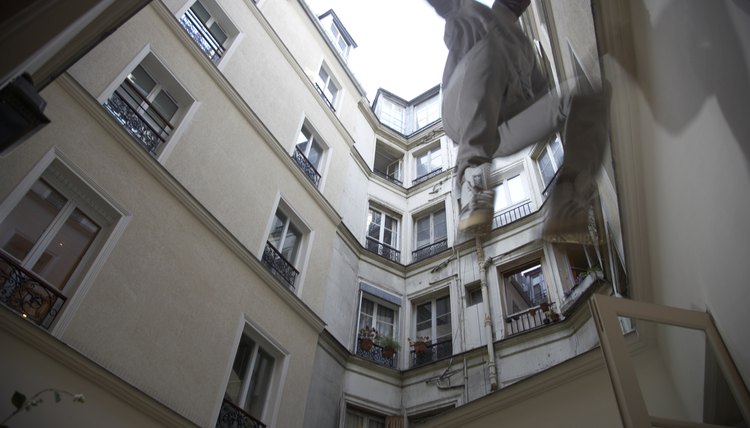Rules of Parkour

Although parkour has been around for decades, it is still considered an emerging sport. There are few, if any, official governing bodies and organizations. However, there are a number of unofficial rules that are widely recognized by traceurs all over the world. These guidelines deal more with the underlying principles and behaviors of respectable parkour practitioners than the athletic form of the sport.
Respect the Training Environment
Parkour is a relationship with the environment around you. As a rule, traceurs should always respect public and private property. Obstacles encountered in the urban landscape were more than likely constructed for purposes other than parkour. Therefore, a certain level of respect for the training ground should be observed. A park bench is not just a vault, it is also an object designed for public use and enjoyment. Many of these obstacles have not been tested for fitness-related activities. Try not to damage property or disrespect other people you might encounter while on a parkour run. They have just as much right to use a bus stop for its intended purposes as you have the right to flip over it.
Risk Management
Parkour is not about leaping off the highest rooftops or doing the most outrageous stunts to impress your friends. One of the most important rules of parkour is "Safety first." Many people are turned off by the sport, due to videos and images of young athletes jumping off rooftops. There are real parkour techniques for traversing high ledges and managing big falls, but that's not what the sport is all about. Managing risk is an essential principle of parkour, but fear must be approached with respect. It's there for a reason and should not be arbitrarily ignored. Allow your physical and mental skills to progress over time before attempting big stunts.
Efficiency Over Style
According to David Belle, one of the founders of the sport, "parkour has the sole purpose to become efficient in case of emergency." As a rule, parkour should always choose efficiency of motion over flashy style moves. For example, when approaching a lower ledge, a quick dash vault should be used instead of a Webster front flip. Although a front flip is more creative for style points, that is not the purpose of passing over obstacles efficiently. Parkour is about function first, while free-running deals with freedom of expression. There is, however, a substantial amount of grey area in this regard. The sport adamantly resists constraint by definition; therefore, always use your own judgment. In the case of a barbed-wire fence, flipping might be the most efficient way to pass.
Maintain Flow
In parkour, there are no rules for passing over specific obstacles. Instead, the all-encompassing rule for parkour is to maintain flow. Flow can be defined as the perpetual movement from one obstacle to the next, allowing the traceur to reach a Zen-like state of connectivity with the environment. This flowing movement is the most recognizable principle of parkour, as seen in recent competitions such as Red Bull's Art of Motion. This rule deals with both external obstacles and internal motivations of the parkour practitioner. Maintaining flow helps overcome obstacles in life, not just during a parkour run. Parkour trainer Dan Dinu writes, "it is the continuous spontaneous movement that defines Parkour rather than the individual moves themselves."
References
Resources
Writer Bio
Frederick S. Blackmon's love for fiction and theater eventually led to a career writing screenplays for the film and television industry. While living in Florida, Blackmon began exploring issues on global warming, health and environmental science. He spent two years as a Parkour and free-running instructor as well. Now he writes everything from how-to blogs to horror films.
